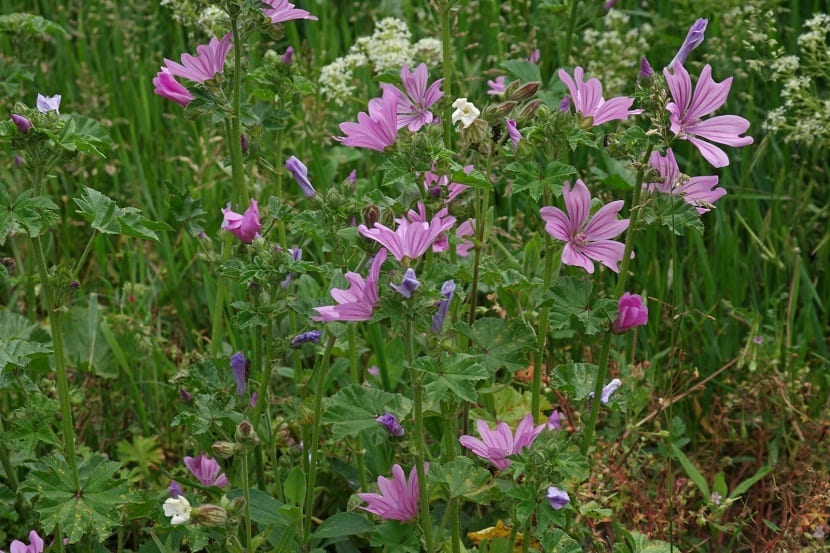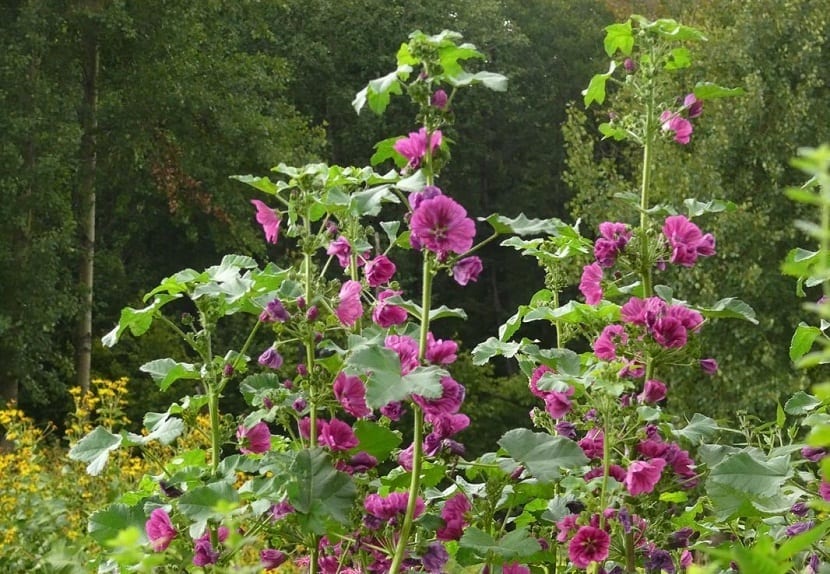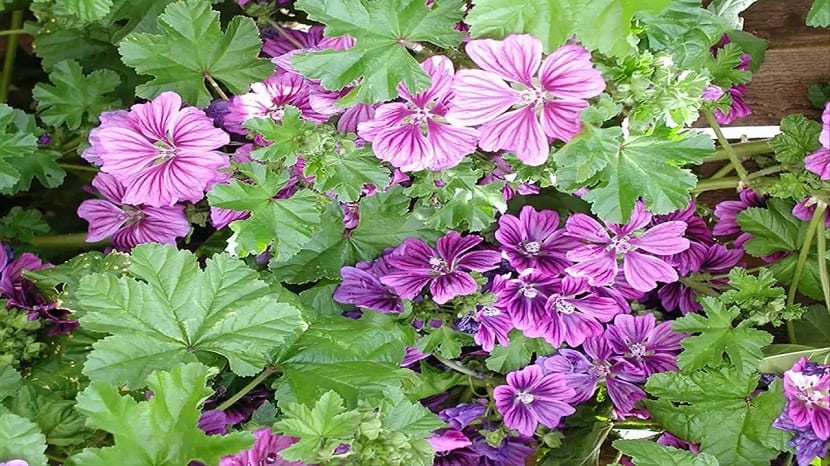
La malva sylvestris it is a plant native to Europe, which can be found within most of the continent, except Iceland, northern Scandinavia and northern Russia. In the same way it is a plant from both Western Asia and North Africa.
However, in South America, within the temperate regions including Argentina, Uruguay and Chile, it is equally possible to achieve the malva sylvestris as adventitia and be quite common.
Features

In the same way, it is worth mentioning that mallow is a really common plant not only within abandoned and open-air lots, but also in fields and road margins, as well as in grasslands and riverbanks.
Usually, the malva sylvestris is linked to the presence of domestic animals and livestock, because possesses a nitrophilic nature, which means that this plant benefits through the abundance of nitrogen it obtains from the excrement of these animals.
The mallow is characterized by being a perennial, herbaceous or biennial plant, which belongs to the family composed of the Malvaceae.
They can have quite variable sizes, so you can find hollyhocks with a height of around 20-150cm. This plant usually has numerous branches and an erect structure, although in certain cases it is lying down.
It has large leaves that have a webbed shape and are divided into five serrated lobes. Its flowers stand out for their great beauty, since they are formed by low-cut petals of a purple or pink tone, which are crossed with very fine veins of a darker color.
Its fruit is a strongly reticulated nut that is generally free of hairs, its seeds are shaped like a cheese wheel and they are of a shade that varies between brown and brownish green when they reach maturity.
The flowering of the malva sylvestris It stands out for being long and constant, starting between February and March, but according to the humidity conditions it can extend until well into October.
These flowers sprout in axillary groups consisting of two or four. It must be said that although this plant looks really nice when it starts to flower, with the arrival of summer its leaves tend to lose their color and its stems take on an irregular appearance.
On the back of the petals of its leaves they have wrinkled veins, giving it an egg shape and delimiting a margin through a strip of hair-shaped projections. What's more, has 10 wide carpels that appear in axillary clusters, as well as stamens which sprout from the center and have soft and short hairs.
Farming

When it comes to growing this plant, it is necessary to take into account the following:
The seeds have the ability to maintain their germination power for approximately three years, so it is usually most convenient to use the seeds obtained from the previous year's harvest.
Due to the small size of the seeds of the malva sylvestris It is possible that the most advisable thing is to sow them inside a nursery and then transplant them to a definitive field and / or sow them directly in it.
By opting for the nursery, there is the possibility to carry out sowing when the winter endsso that seedlings can be transplanted into the field once they are of the appropriate size.
Its direct sowing can be carried out at the beginning of spring. It is essential that the planting density is approximately 50.000 plants per square meter.
Care
The basic care of the malva sylvestris basically consist of the elimination of carpids and weedsHowever, the following must be taken into account:
The watering of the mallow has to be done only when necessary, which is usually at the time of transplanting. The most appropriate climate for the correct development of this plant is usually temperate, although it is also it can grow in mountain or warm-temperate climates.
When it comes to flooring, mallow is not a demanding plant For this reason, it can easily grow in many types of soil, although the most suitable are those that are permeable and of medium consistency. In addition, it is equally successful when planted in sandy soils, provided they are properly provided with organic matter.
As we have already mentioned above, the malva sylvestris usually grows in nitrophilic meadows, roadsides, cleared land, wasteland, etc., and although it is a plant from Europe, it later spread to western Asia and North Africa.
It has also spread to North America considering it a Invasive species, as in eastern Australia. Similarly, in Macaronesia it is possible to find it both in the Azores and in Madeira.
Uses of Mallow

Several uses are attributed to this plant, among them those mentioned below stand out:
Malva sylvestris is attributed various health uses, which is why not only its leaves are usually harvested, but also its flowers when they reach the peak of their flowering. In this sense, the plant stands out because it has a high mucilage content, making it ideal for treating different kinds of irritations due to its properties, such as: laxative and emollient.
When used externally, as poultices or compresses, allows to treat skin irritations like acne, eczema, and boils, among other things.
Preparing an infusion of mallow is ideal to combat oral and throat problems when gargling and / or rinsing. Likewise and due to its expectorant and antitussive propertiesMallow tea can treat lung conditions such as asthma, cough and bronchitis and also relieves constipation by acting as a mild laxative.
in ancient times mallow was cultivated as a food plantTherefore, it is common to consume its young shoots as part of a salad, and its leaves (free of stems and cooked) as a vegetable.
As an edible plant has a fairly light flavor, so it is normally used as an accompaniment to other foods.
Formerly the flowers used to spread towards the doors, so it was common to weave garlands in order to celebrate May Day. Today, its decorative use can be both inside and outside of homes, because it has a very nice and striking appearance.